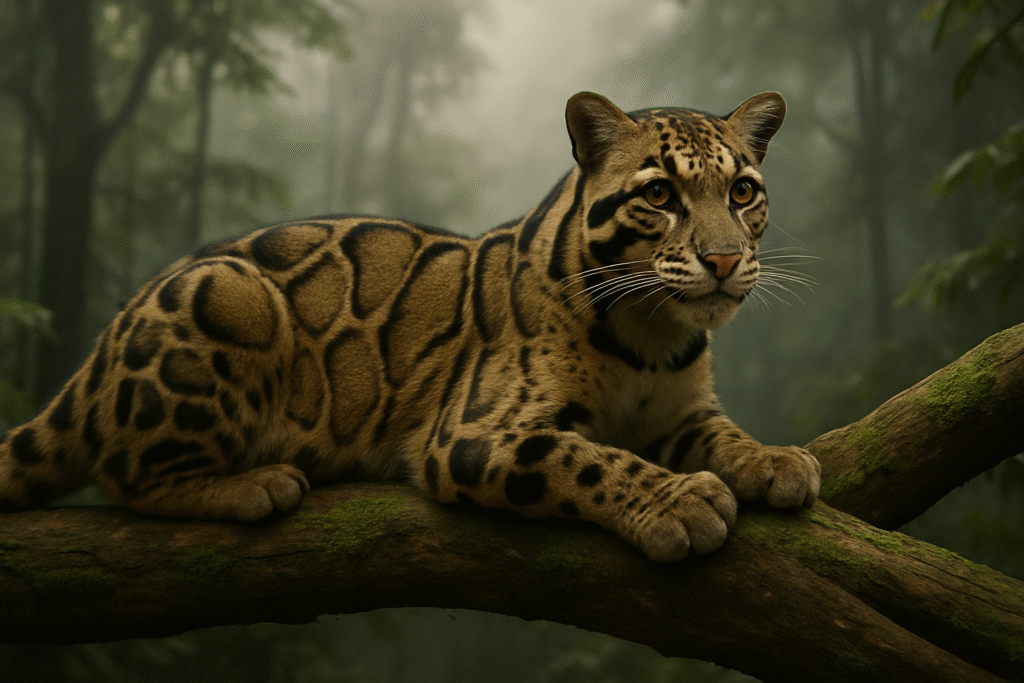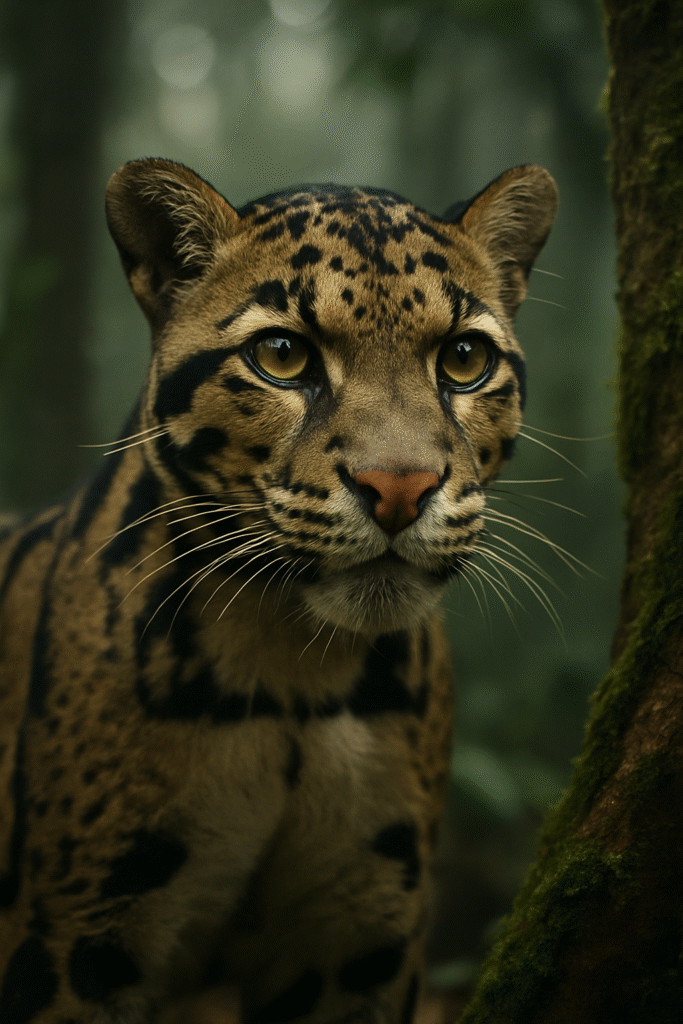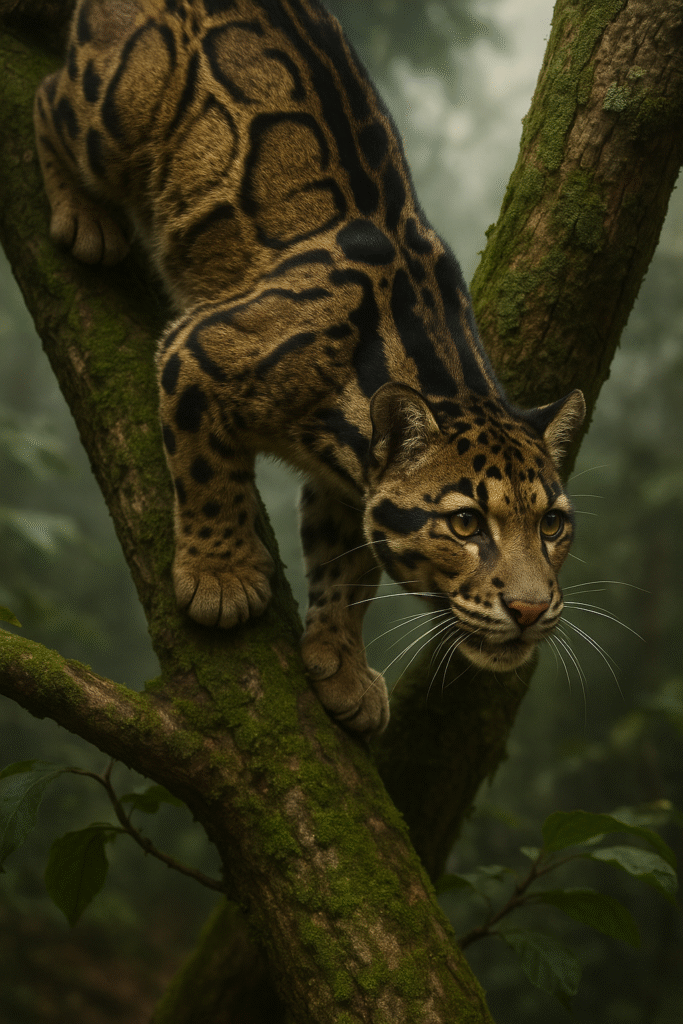In the twilight forests of Southeast Asia, where mists weave through towering dipterocarp trees and silence is broken only by cicadas, moves a creature few have ever truly seen. The Clouded Leopard (Neofelis nebulosa) is not the largest cat nor the loudest hunter, yet it holds a mystique unlike any of its kin. Draped in a coat of swirling patterns that mimic broken sunlight filtering through leaves, it is as much apparition as predator—a ghost painted in shadows.

A Predator Between Worlds
Unlike its cousins, the Clouded Leopard walks the boundary between big cats and smaller felines. With elongated canine teeth that rival the saber-toothed cats of prehistory and a tail as long as its body to balance in the canopy, it has adapted to an arboreal life that no other large predator dares attempt. It climbs headfirst down trees like a squirrel, leaps impossible distances, and stalks from above, a hunter suspended between earth and sky.
Its prey is as varied as the forest itself: monkeys leaping through branches, birds roosting in foliage, deer that wander too close to the undergrowth. And yet, for all its skill, the Clouded Leopard remains elusive—photographed more often by camera traps than by human eyes.
Myths in the Mist
For local communities, the Clouded Leopard carries an aura of reverence and caution. In some hill tribes of Myanmar and Laos, its pelt’s shifting clouds are said to hold the spirits of ancestors, guiding the living through the forest. In other tales, its sudden vanishing act is a warning: to lose sight of it is to lose one’s path.

Even in modern conservation circles, it is a creature of myth. Its genetic lineage suggests it may be the living link between smaller cats and the great pantherines, a feline branch that holds the memory of evolution’s hidden experiments.
A Fragile Ghost
Yet this ghost is in danger of disappearing altogether. Habitat destruction across Southeast Asia—logging, palm oil plantations, urban expansion—has shredded its range. Poaching, driven by demand for skins and bones, continues to shadow the species. Today, it is listed as vulnerable, its numbers dwindling, its forests shrinking.
The paradox is striking: an animal so gifted at vanishing may vanish forever, not by choice but by human hand.
The Clouded Lesson
To encounter a Clouded Leopard is to glimpse the forest’s soul—silent, untamed, fragile. It is a reminder that the most extraordinary lives are not those that roar the loudest but those that endure in quiet brilliance, hidden in plain sight.

The Clouded Leopard teaches us the value of shadows, of patience, of mystery. It is not the lion on the savanna or the tiger in the jungle, but the whisper between them: the presence that is felt rather than seen. And like mist at dawn, once gone, it cannot be recalled.


Reply